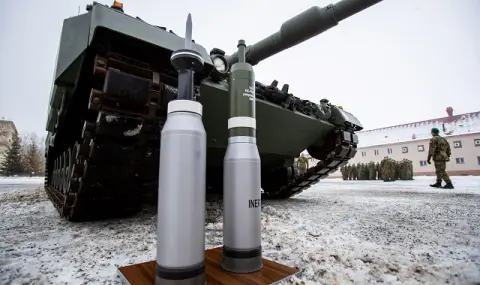In 2023, global military budgets reached $2.44 trillion. These are record costs for years. This is how much the war in Ukraine is costing the West:
If you wonder if threats to global security are growing, look at how much governments have increased their defense spending. In 2023, global military budgets reached $2.44 trillion - nearly 7% more than the previous year. This is the sharpest annual increase since 2009.
Today, governments around the world spend $306 on military spending per capita - men, women and children. They have not been higher since the end of the Cold War.
With Kiev unprepared to fight such a large-scale conflict, after Russia launched its full-scale invasion in February 2022, Western countries increased their military aid to Ukraine - apart from other rising tensions with Russia and simmering conflicts in the Middle East. and Asia. All this is causing governments to strengthen their defenses - on a scale not seen since the end of World War II.
This year, the US has earmarked $886 billion for defense -- an increase of more than 8 percent over two years. For the first time, European NATO allies are expected to meet the requirement of a minimum of 2% of gross domestic product (GDP). This year, they will spend a total of 380 billion dollars on defense, NATO Secretary General Jens Stoltenberg assured.
Poland tops the ranking
Germany is still catching up with other NATO members, despite receiving a hundred billion euros in the special fund for the modernization of the Bundeswehr. However, Poland will spend 4.2% of GDP on defense this year - the most in the entire military alliance. Other countries on NATO's eastern flank are also significantly exceeding, or soon to be, the 2% target - due to the increased security threat along their borders.
As a result, governments face increasingly difficult choices about how to pay for these new defense commitments, while many economies are weakening due to the effects of ongoing global geopolitical tensions and high inflation. Many countries are already experiencing serious financial difficulties.
"Short-term commitments to Ukraine must be financed with additional debt. This is the way in which wars were financed in the past," Günter Wolff, a senior researcher at the Brussels think tank "Brügel", told DV. But for a longer-term increase in defense spending, either taxes should be raised or other expenses should be reduced, the expert adds.
Germany is cutting the budgets of the ministries - except for the military
Germany, which expects lower tax revenues because of weaker growth, has cut spending in most government departments and cut almost 2 billion euros in international development aid this year.
"Germany has to make some very important compromises,", says Jeffrey Rathke, president of the American-German Institute at Johns Hopkins University. in Washington. "All these efforts must be so managed by politicians that they do not undermine public support for improving security and strengthening defense," he specified for DV.
In a number of countries, left-wing political parties have campaigned for peace between Russia and Ukraine and are asking whether new military spending could be better spent on health or social programs.
Rathke notes that Germany's debt brake, which limits the government's ability to take out new loans to cover budget holes, means Chancellor Scholz's coalition has less room to maneuver than in France, for example.< /p>
Poland's finances are in much better shape than those of many Western European countries. However, because of the higher defense budget, Prime Minister Donald Tusk, who ousted the right-wing populist government last October, is finding it difficult to fulfill his campaign promises, one of which is to increase tax-free income.
Other EU countries struggle with the 2% of GDP requirement
Other European countries such as those worst hit by the European debt crisis in 2011 are now undergoing severe austerity measures and any further cuts could affect the quality of public services. Italy, for example, is expected to spend just 1.46% of GDP on defense this year, and Rome has already warned that it will struggle to meet NATO's 2% target by 2028. The country's debt-to-GDP ratio is expected to reach 137.8% this year.
Other countries in similar financial straits - such as Spain for example - could divert resources from other sectors to increase their military spending, but to a maximum of 1.5% of GDP. Madrid increased its defense budget by 26% last year.
In this regard, Gunter Wolf recalls that the European debt crisis required budget adjustments of 5-7%, and in Greece even of 10%. "Against this background, the current cuts will be much less painful than anything the European south has already had to endure," adds the Bruegel expert.
The Netherlands, Sweden, Norway and Romania have a lower debt burden. But in the Netherlands, for example, right-wing populist Geert Wilders is planning significant spending on social security, housing and agriculture to ensure the preservation of his new four-party coalition.
The next target: 3% of GDP?
Defense spending is expected to continue to rise over the next decade. NATO's 2% defense spending target was first set in 2014 - following Moscow's annexation of Crimea and the rise of Russian-backed separatists in eastern Ukraine.
At their meeting in Vilnius last year, NATO leaders agreed that the target could go beyond the current 2% of GDP. Germany, which has so far struggled to meet the original target, is now discussing the prospect of allocating 3% of its gross domestic product to defense, which would have even more serious implications for public finances.
